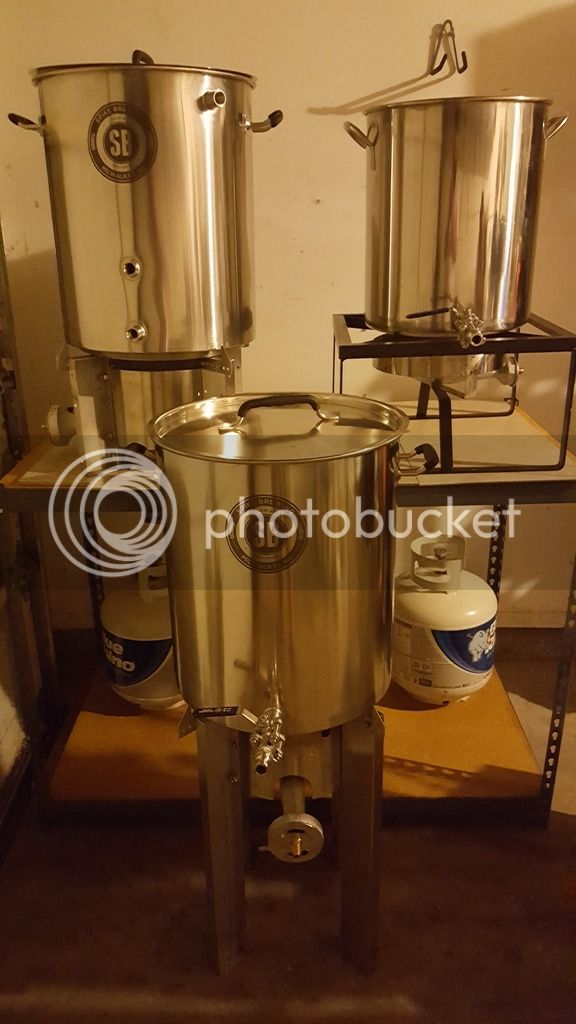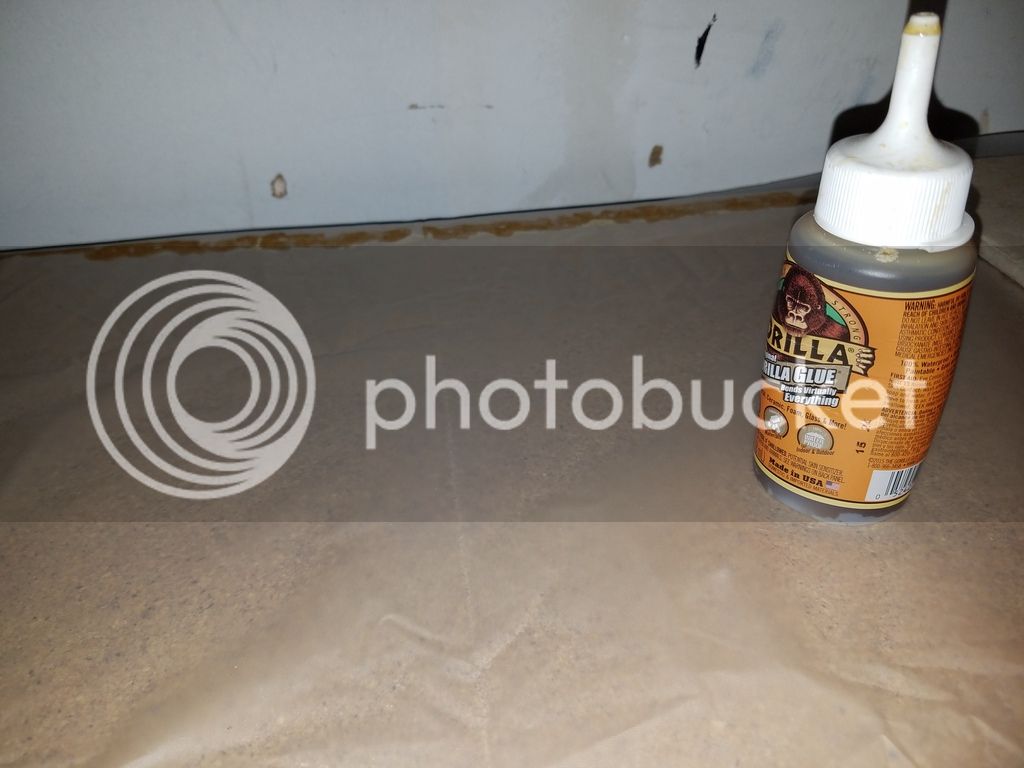jmill
Well-Known Member
- Joined
- Apr 28, 2016
- Messages
- 168
- Reaction score
- 44
After a few bad brew days, I decided to go ahead and accelerate the upgrades of my equipment. I began with partial mash kits and a starter kit from my LHBS. After a handful of brews, I moved to a 2 cooler AG system. After some research and lots of planning, I've decided to make one final upgrade so I have a system I can really grow into and can avoid more frequent upgrades. I can do 5 gal batches with this system, but it should be good for most 10 gal batches absent a huge barley wine. I settled on a direct fire SS system. I have 1 pump for now, and may add a second before I'm done.
I've received all but two pieces, and began rearranging the garage. I thought I'd share both to keep a record for myself and perhaps provide unbiased reviews for some of the products I am using.
I welcome any advice you may have. Anyone have the Beersmith profile for a 15 gal Spike MLT? Or wanna guess how much my efficiency is going to rise?
Here is the new lineup:
Brew stand: heavy duty steel shelves with partial board shelves (sealed) (in 2 parts - one for brew stand and one for work bench/grain/equipment storage)
10 gal 1 weld LHBS SS HLT with internal markings + LHBS bayou based burner
15 gal 3 weld Spike MLT with Spike false bottom and SS Brewtech re-circulation manifold + Blichmann burner
15 gal 1 weld Spike BK + Blichmann burner with leg extensions
6" x 16" Arbor Fabricators Hop Basket
1 Chugger SS center outlet pump + quick disconnect camlocks
Jaded Hydra IC with whirpool + pre-chiller
SS Brewtech Brewmaster Bucket
Cool Brewing coolers for fermenting temp control
I'm going to be out of town this weekend, so looking forward to putting this to the test next weekend. I'm planning a Boulevard Tank 7 clone so I don't have to worry too much about overshooting the grain profile/underestimating my efficiency. I have 2 bottles of the original in the fridge awaiting a comparison taste test.
I received the Spike MLT today and was a little concerned with the condition of the box. (See pics.) The handle on one side was torn, exposing the 3rd weld. Luckily it wasn't bent or damaged. There were some scratches on the front outside, but nothing worth complaining about. This thing is going to get moved around a bunch, so I am sure it'll have it's marks after use.
And now for some eye candy...








I've received all but two pieces, and began rearranging the garage. I thought I'd share both to keep a record for myself and perhaps provide unbiased reviews for some of the products I am using.
I welcome any advice you may have. Anyone have the Beersmith profile for a 15 gal Spike MLT? Or wanna guess how much my efficiency is going to rise?
Here is the new lineup:
Brew stand: heavy duty steel shelves with partial board shelves (sealed) (in 2 parts - one for brew stand and one for work bench/grain/equipment storage)
10 gal 1 weld LHBS SS HLT with internal markings + LHBS bayou based burner
15 gal 3 weld Spike MLT with Spike false bottom and SS Brewtech re-circulation manifold + Blichmann burner
15 gal 1 weld Spike BK + Blichmann burner with leg extensions
6" x 16" Arbor Fabricators Hop Basket
1 Chugger SS center outlet pump + quick disconnect camlocks
Jaded Hydra IC with whirpool + pre-chiller
SS Brewtech Brewmaster Bucket
Cool Brewing coolers for fermenting temp control
I'm going to be out of town this weekend, so looking forward to putting this to the test next weekend. I'm planning a Boulevard Tank 7 clone so I don't have to worry too much about overshooting the grain profile/underestimating my efficiency. I have 2 bottles of the original in the fridge awaiting a comparison taste test.
I received the Spike MLT today and was a little concerned with the condition of the box. (See pics.) The handle on one side was torn, exposing the 3rd weld. Luckily it wasn't bent or damaged. There were some scratches on the front outside, but nothing worth complaining about. This thing is going to get moved around a bunch, so I am sure it'll have it's marks after use.
And now for some eye candy...
















